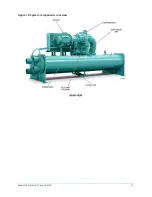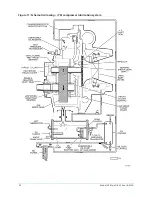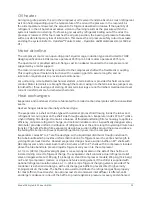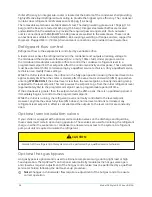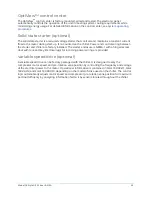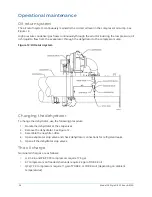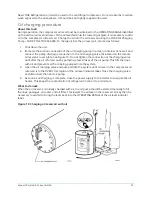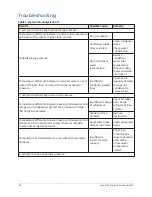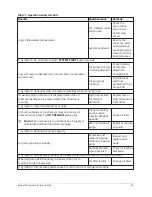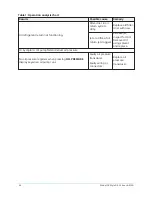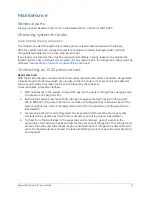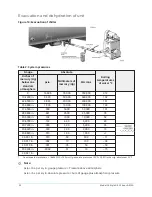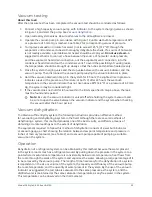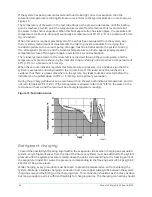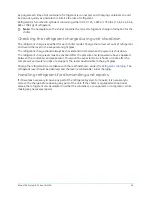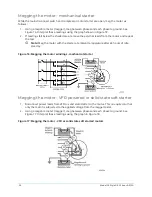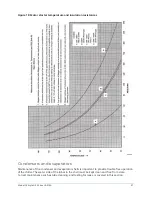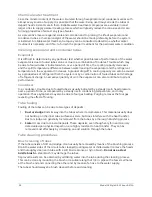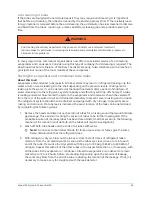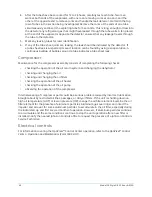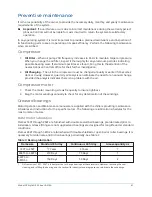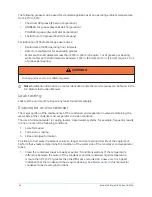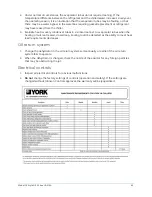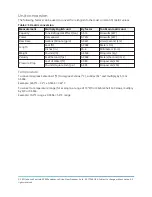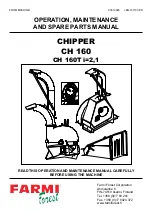
If the system has been pressure tested and found to be tight prior to evacuation, then the
saturation temperature recordings follow a curve similar to the typical saturation curve shown as
Figure 15.
The temperature of the water in the test tube drops as the pressure decreases, until the boiling
point is reached, at which point the temperature levels off and remains at this level until all of
the water in the shell is vaporized. When this final vaporization has taken place, the pressure and
temperature continue to drop until eventually a temperature of 35°F (1.6°C) or a pressure of 5 mm
Hg. is reached.
When this point is reached, practically all of the air has been evacuated from the system, but
there is still a small amount of moisture left. In order to provide a medium for carrying this
residual moisture to the vacuum pump, nitrogen must be introduced into the system to bring
it to atmospheric pressure, and the indicator temperature returns to approximately ambient
temperature. Close off the system again, and start the second evacuation.
The relatively small amount of moisture left is carried out through the vacuum pump, and the
temperature or pressure shown by the indicator drops uniformly until it reaches a temperature of
35°F (1.6°C) or a pressure of 5 mm Hg.
When the vacuum indicator registers this temperature or pressure, it is a positive sign that the
system is evacuated and dehydrated to the correct limit. If this level cannot be reached, it is
evidence that there is a leak somewhere in the system. Any leaks must be corrected before the
indicator can be pulled down to 35°F or 5 mm Hg. in the primary evacuation.
During the primary pulldown, keep a careful watch on the wet bulb indicator temperature, and do
not let it fall below 35°F (1.6°C). If the temperature is allowed to fall to 32°F (0°C), the water in the
test tube will freeze, and the result will be a faulty temperature reading.
Figure 15: Saturation curve
Refrigerant charging
To avoid the possibility of freezing liquid within the evaporator tubes when charging an evacuated
system, only refrigerant vapor from the top of the drum or cylinder must be admitted to the system
pressure until the system pressure is raised above the point corresponding to the freezing point of
the evaporator liquid. For water, the pressure corresponding to the freezing point is 8.54 psig (58.9
kPa) for R-134a, at sea level.
While charging, every precaution must be taken to prevent moisture laden air from entering the
system. Make up a suitable charging connection from new copper tubing to fit between the system
charging valve and the fitting on the charging drum. This connection should be as short as possible
but long enough to permit sufficient flexibility for changing drums. The charging connection should
Model YK Style G R-134a or R-513A
34


